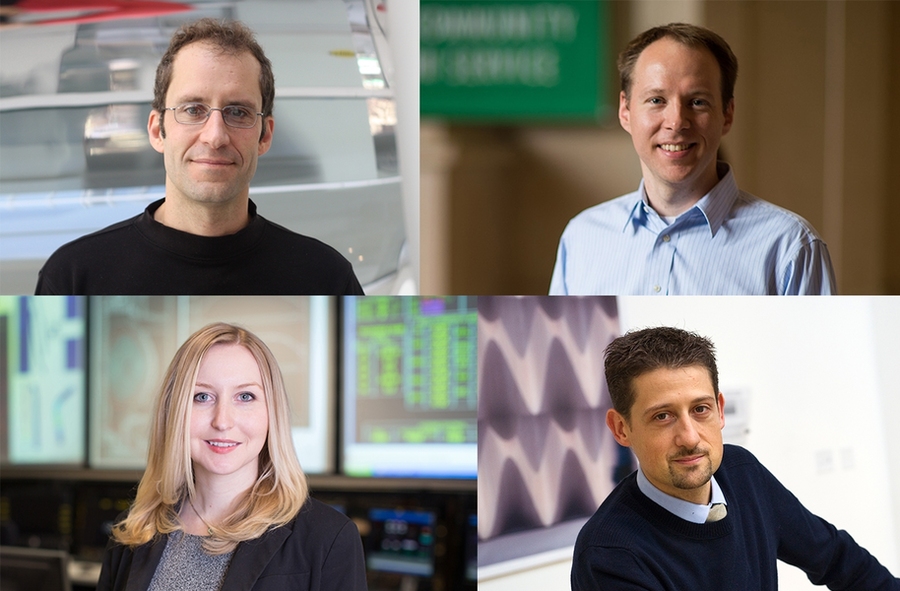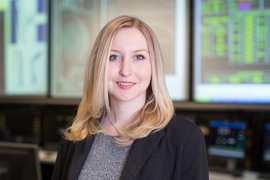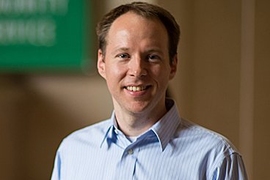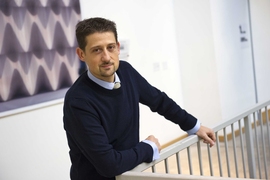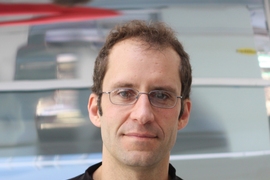MIT Department of Nuclear Science and Engineering (NSE) head Richard K. Lester has announced four faculty promotions in the department this spring: Jacopo Buongiorno has been promoted to full professor, Benoit Forget and Anne White have been promoted to the rank of associate professor with tenure, and Emilio Baglietto has been promoted to the rank of associate professor without tenure. The promotions are effective July 1.
Professor Jacopo Buongiorno is one of the world’s leading researchers in nuclear thermal hydraulics and boiling heat transfer. His investigations of the effects of nanoparticle dispersions in fluids on single-phase and multiphase heat transfer, his experimental studies of the impacts of solid-surface morphology and composition on boiling phenomena, and his development of advanced diagnostics enabling the quantitative characterization of these phenomena have produced results of importance for the design and safety analysis of light-water-cooled nuclear reactors. He is currently leading an NSE design team that is developing a new concept for an offshore floating nuclear power plant. Buongiorno is also a gifted teacher and mentor whose contributions to both undergraduate and graduate education have been recognized with many awards, including recently being named a MacVicar Faculty Fellow — MIT’s highest honor for undergraduate teaching and education. This year he received the Ruth and Joel Spira Award for Distinguished Teaching — an award he also won in 2006 and 2011.
Associate Professor Ben Forget is the leader of a new generation of researchers who are developing new methods and models for efficient, high-fidelity simulation of nuclear reactor cores on leadership-class computers. He has made original contributions to both stochastic and deterministic methods, and these new approaches are greatly enhancing both the accuracy and the speed of nuclear reactor analysis. Forget’s conceptual innovations and technical implementations have the potential to revolutionize the field of computational reactor physics, and they are already having a major impact on the research community around the world. In 2013 he received the Landis Young Member Engineering Achievement Award from the American Nuclear Society. Forget is an excellent teacher and an outstanding mentor of MIT students, and he has played a key role in bringing MIT back to the forefront of education and research in nuclear reactor physics — a field that is of fundamental importance to the future of nuclear energy.
Associate Professor Anne White studies the physics of turbulence in magnetically-confined fusion plasmas. The goal of her research is to advance the capability to predict and control turbulent transport in these plasmas — a grand challenge for fusion energy development. Since coming to MIT, White has emerged as one of the world’s leading experimentalists in fusion plasma turbulence and also as a world leader in validating non-linear gyrokinetic models of turbulence through careful comparisons with experimental measurements. Her research has led directly to a deeper understanding of anomalous heat transport in the plasma core, a central goal of fusion research. Within the department, White is also known as a teacher and mentor of great skill, energy, and dedication. In the past year she received three major awards: the Fusion Power Associates Excellence in Fusion Engineering Award; the Katherine Weimer Award from the American Physical Society; and the Junior Bose Award for Excellence in Teaching from the MIT School of Engineering.
Associate Professor Emilio Baglietto develops, validates, and applies computational thermal hydraulic models for use in nuclear-reactor design and safety analysis. Since coming to MIT he has built on his previous industrial experience to make important contributions to the development of innovative physics-based models and computational methods for high-fidelity simulation of complex, unsteady, multiphase and turbulent fluid flows and heat transfer. He is the leading young researcher in the U.S. in a field that is now at the forefront of the academic and industrial development of nuclear thermal hydraulics. He is an excellent teacher and a highly-regarded mentor, and in less than three years he has built up a large and productive research group.
